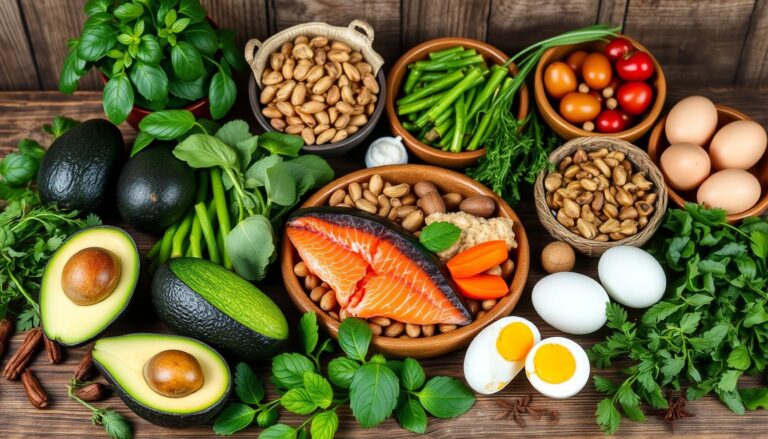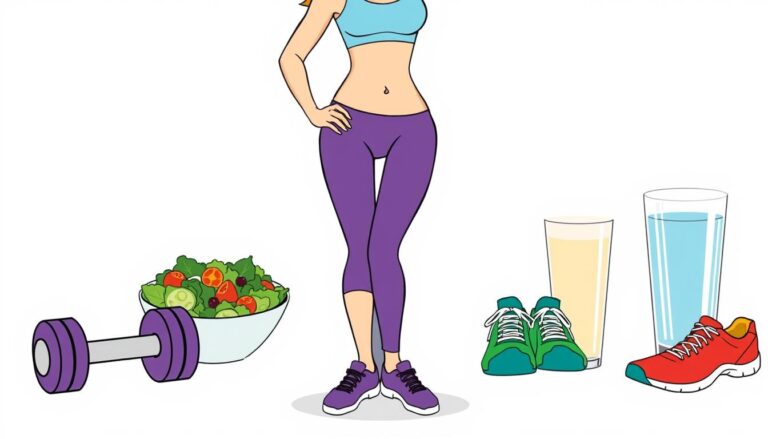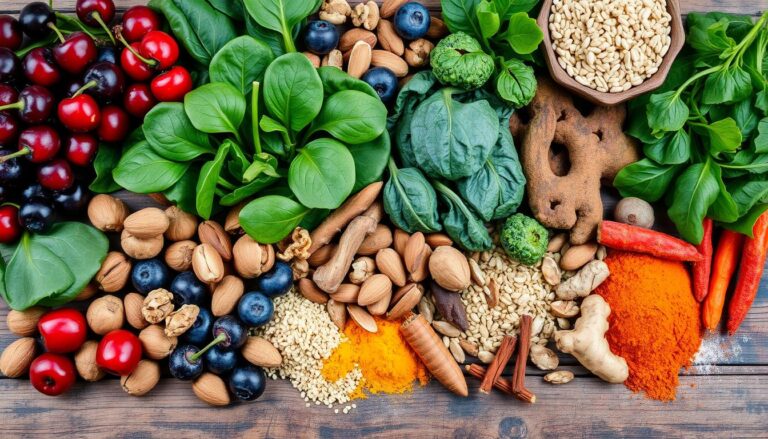Are you tired of carrying around stubborn belly fat and dreaming of a toned, flat midsection? You’re not alone.
Many people struggle with excess abdominal fat, making it hard to lose. But, with the right strategies and a consistent effort you can say goodbye to that pesky belly bulge. So let me ask you a thought provoking question: Are you aware of the hidden dangers that lurk within your belly fat?
This guide will reveal the secrets to losing belly fat effectively. You’ll get practical tips, cutting-edge techniques, and evidence based strategies. By the end, you’ll know how to start a journey towards a slimmer, more confident you.
Key Takeaways
- Understand the different types of body fat and their health implications
- Discover the dietary strategies to create a sustainable calorie deficit for fat loss
- Explore the most effective exercise routines for targeting and reducing belly fat
- Learn about metabolism-boosting techniques, including the benefits of strength training and HIIT
- Recognize the impact of lifestyle factors, such as stress management, on weight gain and fat distribution
Understanding Belly Fat
Belly fat is a big worry for many who want to get healthier and look better. It’s important to know the different kinds of body fat and their health risks. This knowledge helps in fighting belly fat effectively.
Types of Body Fat
There are two main kinds of body fat: visceral and subcutaneous. Visceral fat is deep inside, wrapping around organs. Subcutaneous fat is right under the skin. Too much visceral fat is bad news, linked to many health problems.
Health Risks Associated with Belly Fat
Having too much belly fat, especially visceral fat, raises the risk of health issues. These include:
- Metabolic disorders, such as insulin resistance and type 2 diabetes
- Cardiovascular disease, including high blood pressure and heart disease
- Certain types of cancer, including colon and breast cancer
- Sleep apnea and other respiratory issues
- Fatty liver disease and other liver problems
This shows why losing belly fat is crucial. It’s important to make lifestyle changes and use specific strategies to fight it.
| Visceral Fat | Subcutaneous Fat |
|---|---|
| Deep, internal fat that surrounds organs | Fat layer just beneath the skin |
| Linked to higher health risks | Less associated with health risks |
| Increases risk of metabolic disorders, cardiovascular disease, and certain cancers | Primarily affects appearance |

Excess belly fat is not just a cosmetic issue it’s a significant health concern that can lead to a range of serious medical conditions.
Dietary Strategies for Belly Fat Loss
For lasting weight loss and fat burning, focus on a calorie deficit. Eat foods that are nutrient-dense and whole. This helps your body’s metabolism and targets belly fat.
Creating a Calorie Deficit
To lose weight, aim for a calorie deficit. This means eating less than your body needs to stay the same weight. This makes your body use fat for energy, reducing belly fat.
Understanding your macronutrients proteins, carbs, and fats is key. Eating nutrient-dense foods like lean meats, whole grains, fruits, and veggies helps you feel full on fewer calories.
Good portion control and meal planning are also crucial. Being aware of how much you eat and planning meals helps you stick to your fat-burning goals.
| Macronutrient | Recommended Daily Intake | Benefits for Belly Fat Loss |
|---|---|---|
| Protein | 0.8-1.2 grams per pound of body weight | Helps preserve muscle mass, supports metabolism, and promotes satiety. |
| Carbohydrates | 30-50% of total daily calories | Provides energy, supports physical activity, and can be sourced from fiber-rich, nutrient-dense foods. |
| Fats | 20-30% of total daily calories | Supports hormone production, brain function, and can be obtained from healthy, unsaturated sources. |
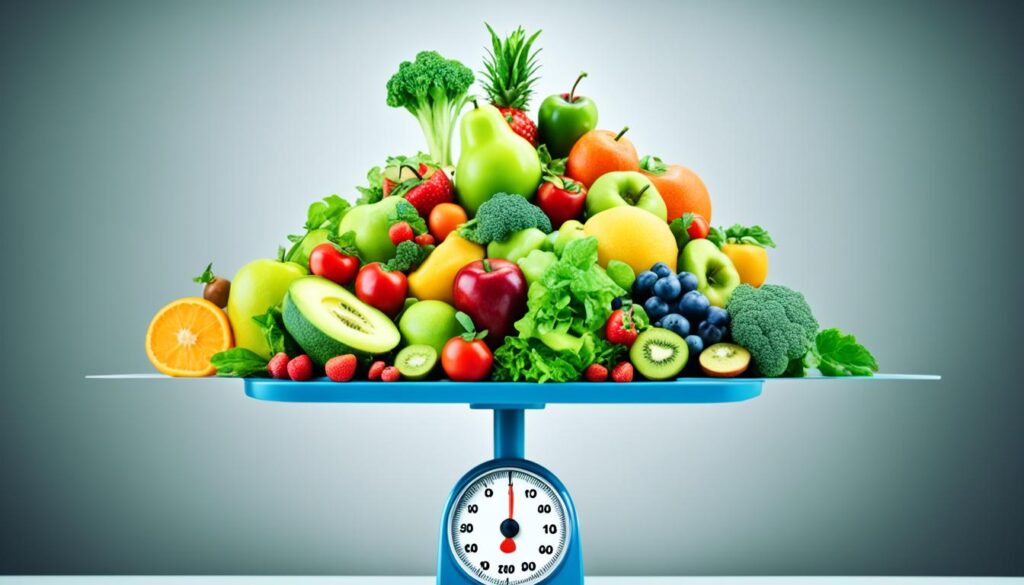
The key to long-term weight loss and fat burning is to create a sustainable calorie deficit through a balanced, nutrient dense diet.
Belly Fat and Exercise Routine
Targeted exercise routines can help reduce belly fat and shape a better midsection. Dietary strategies are key for fat loss, but adding the right abdominal exercises, resistance training, and high-intensity interval training HIIT can also help. These can lead to a toned, flat stomach.
Core strength and muscle building start with resistance training. Doing exercises like squats, deadlifts, and overhead presses works multiple muscles. This helps burn fat and build lean muscle, including in your abdominal area.
Adding targeted abdominal exercises can help you get that six-pack look. Planks, crunches, and leg raises are great for strengthening your core and tightening your midsection. Do these exercises a few times a week for the best results.
HIIT workouts are also powerful. They help you burn fat quickly, improving your overall body composition and toned physique. By mixing intense exercise with rest periods, you can boost your calorie burn and fat loss efforts.
Being consistent is crucial with any exercise plan. Mix resistance training, core-focused exercises, and HIIT for the best results in reducing belly fat and reaching your body transformation goals.

Targeted exercise routines can help you achieve a toned, flat stomach and reduce overall body fat.
Metabolism Boosting Techniques
Boosting your metabolism is key for losing belly fat. Strength training and high-intensity interval training HIIT with cardio are great options. These methods can help you burn fat and increase your metabolism.
Importance of Strength Training
Strength training is crucial for building lean muscle. This increases your resting metabolic rate. The more muscle you have, the more calories you burn, even when you’re not moving.
Adding resistance exercises to your routine helps you look toned and boosts your metabolism. This makes you better at burning fat.
HIIT and Cardio Exercises
HIIT is a top choice for boosting your metabolism and losing fat. It involves short, intense workouts followed by brief recoveries. This approach raises your heart rate and burns more calories, keeping your metabolism high.
Combining HIIT with cardio exercises can increase your calorie burn and improve your energy balance. This makes it a powerful way to stay fit.
| Exercise | Benefit | Intensity Level |
|---|---|---|
| Strength Training | Increases muscle mass and resting metabolic rate | Moderate to High |
| HIIT | Elevates heart rate and burns more calories | High |
| Cardio Exercises | Enhances overall calorie expenditure | Moderate to High |
Using strength training, HIIT, and cardio together can really boost your metabolism. This combination helps you burn fat more effectively.

Consistent strength training and high-intensity interval workouts are game-changers in the quest for a leaner, more toned physique and a faster metabolism.
Lifestyle Modifications for Fat Reduction
For long-term belly fat reduction, you need to look at your diet, exercise, and lifestyle. Making simple changes can greatly help your weight loss journey and support fat reduction.
Good sleep quality is key for managing hormones and metabolism. Try to get 7-9 hours of sleep each night. This helps with stress management and boosts your body’s fat-burning abilities.
Drinking enough water is vital for a healthy life. It helps with digestion, stops cravings, and increases physical activity. Drink at least 8 cups of water a day to stay hydrated.
Being mindful when you eat can lead to better food choices and less overeating. Combine this with a balanced diet and regular exercise. This helps with habit formation and lifestyle changes for lasting fat loss.

Sustainable weight loss is not just about what you eat, but how you live.
Adding these lifestyle changes to your routine will help you reach your fat reduction goals. You’ll also enjoy a healthier, more balanced life.
Stress Management and Belly Fat
Stress often leads to unwanted weight gain, especially around the midsection. Chronic stress raises cortisol levels, a hormone that affects how the body stores fat. This can make losing belly fat hard because cortisol makes the body hold onto fat, especially in the stomach.
Stress can also make people eat more unhealthy foods. When stressed, some turn to foods high in calories as a way to cope. This can start a cycle of stress, poor eating, and weight gain.
Impact of Stress on Weight Gain
Stress affects how your body handles fat. High cortisol levels from stress can:
- Make you want to eat more high-calorie foods
- Help store fat, especially in the stomach
- Disturb sleep, making stress worse
- Weakens the immune system and increases health risks
Managing stress well is key to keeping a healthy weight and less belly fat.
Strategies for Stress Management
To fight stress’s effect on your waistline, try these stress-lowering methods daily:
- Practice mindfulness and meditation to calm your mind and lower cortisol
- Do relaxation techniques like deep breathing, yoga, or light exercise
- Focus on quality sleep with a regular schedule and a calming bedtime routine
- Get support from friends, family, or a therapist to handle stress
- Add stress-lowering supplements like ashwagandha or adaptogens to your routine
By tackling stress and using effective stress management, you can help reach your weight loss goals and reduce belly fat.
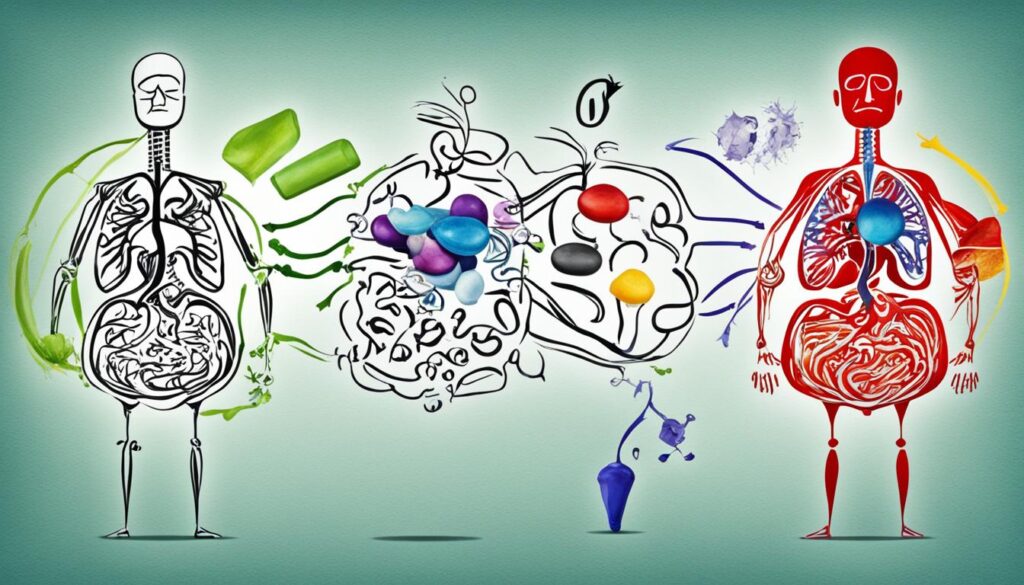
Supplements for Waist Circumference Reduction
While changing your diet and lifestyle is key to losing belly fat, some supplements can help too. This section looks at supplements that might help shrink your waist and target belly fat. These include green tea, conjugated linoleic acid CLA, protein, fiber, and thermogenic formulas.
Green tea is a top choice for boosting metabolism and burning fat. Its active parts, like catechins, can move stored fat and help you lose weight. This includes reducing waist circumference and visceral fat.
Conjugated linoleic acid CLA is a fatty acid that might help with fat loss and waist circumference shrinkage. Studies say CLA could cut down body fat, especially around the belly.
Protein supplements, like whey or plant-based ones, are great for fat loss and metabolism. They make you feel full and help keep muscles strong when you’re eating fewer calories.
Fiber supplements, such as psyllium husk or glucomannan, can also help with waist circumference by making you feel more satisfied and supporting good digestion.
Lastly, thermogenic supplements with ingredients like caffeine, green tea, or capsaicin can increase metabolism and burn more calories. This might help with fat loss and waist circumference reduction.
Remember to follow the right dosages and talk to a healthcare professional before adding these supplements to your routine. This is especially true if you have health issues or are on other medications.
| Supplement | Potential Benefits | Considerations |
|---|---|---|
| Green Tea | Increased metabolism, fat burning | Caffeine content, may interact with certain medications |
| Conjugated Linoleic Acid CLA | Reduced body fat, waist circumference | Potential side effects, such as digestive issues |
| Protein Supplements | Increased feelings of fullness, muscle maintenance | Choose high-quality, low-calorie options |
| Fiber Supplements | Improved satiety, healthy digestion | Start with low doses to avoid digestive discomfort |
| Thermogenic Supplements | Boosted metabolism, energy expenditure | Potential side effects, such as jitteriness or increased heart rate |
Supplements can provide an extra edge, but they should never replace a healthy diet and active lifestyle.
Tracking Progress and Staying Motivated
Keeping an eye on your weight loss journey is key. It’s not just about the number on the scale. Tracking body measurements gives you a full picture of your changes.
Body Measurements and Progress Tracking
Don’t forget to measure your weight, waist circumference, body fat percentage, and other important body composition metrics. This shows changes in your body shape and fat distribution that the scale might miss.
- Measure your waist circumference at the narrowest part of your midsection, just above your hip bones.
- Use a reliable method, like skinfold calipers or a bioelectrical impedance analysis BIA scale, to check your body fat percentage.
- Track changes in your chest, hips, and thigh measurements to see shifts in your body composition.
Recording these body measurements and tracking your progress can give you valuable insights. It helps you stay motivated on your weight loss journey.
Goal Setting and Accountability
Setting realistic goals is crucial for staying motivated. Break down your big goals into smaller, achievable steps. Having a friend, family member, or fitness pro to support you can also help you stay on track.
| Metric | Initial Measurement | Current Measurement | Goal |
|---|---|---|---|
| Weight | 180 lbs | 165 lbs | 155 lbs |
| Waist Circumference | 38 inches | 35 inches | 32 inches |
| Body Fat Percentage | 28% | 22% | 18% |
By keeping up with your progress tracking and celebrating your wins, you’ll stay motivated. This helps you reach your weight loss and body composition goals.
Conclusion
Getting rid of stubborn belly fat needs a mix of diet changes, exercise, metabolism boosters, and lasting lifestyle changes. This guide shows you how to lose belly fat, boost your health, and get a toned midsection. Remember, sticking with it and being patient are key for lasting results.
Follow these effective tips to start your journey to a slimmer, healthier body. Losing belly fat improves your looks and lowers health risks. Focus on eating well, exercising regularly, and making lifestyle changes that help your weight loss efforts.
With hard work and a dedication to these methods, you can achieve lasting belly fat loss and feel the joy of a leaner, more energetic body. Adopt this all-around approach and see the pounds and inches disappear. You’ll be on your way to a fitter, more confident you.
